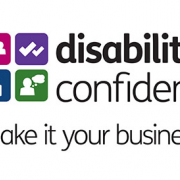A diverse workforce is a healthy workforce, ripe to innovate and produce goods and services fit for the consumer of tomorrow. Employers, however, need to know what to do to ensure their valuable employees with a disability are allowed to shine. In this, the unofficial third part to our ‘To disclose or not to disclose’ series, we’ll look at the secret to a truly best-practice approach to diversity in the workplace.
Think the job market is tough?
If you don't have a disability and think that today’s climate is a tough one when it comes to finding the right job (or even any work at all) then spare a thought for someone with a disability. In my last post we looked at the difficulties disabled people face when trying to get work. If you tell recruiters about your disability then the response is often no response at all. You don’t even get a chance.
This is of course illegal. If you’re qualified for the job then, according to the Equality Act 2010, you aren’t allowed to be discriminated against on the grounds of disability, race, religion, gender, sexual orientation, marital status or maternity. It’s the law to look at what reasonable adjustments can be put in place that could help in these areas but, while many very able candidates are still marked down on factors other than their qualifications and experience, it’s disability that is so often the most common area where rank discrimination still festers.
A clear path to inclusive recruitment
Not to worry, though. Step forward ClearTalents. In my last blog, we looked at this straightforward solution to the challenge of knowing what reasonable adjustments to apply for candidates across all these categories – a challenge faced by recruiters every day. With ClearTalents in place, every employer can get the diverse workforce they deserve. The next challenge is keeping that valuable level of diversity, making sure the right processes are in place to meet their needs, and frankly not making any dumb mistakes. We’ll look at both of those below.

Creating a clear path to diversity
We’ve discussed using ClearTalents during recruitment to ensure that the right accommodations are in place for every candidate throughout the application process. In the workplace the exact same legal requirement to make reasonable adjustments applies.
Luckily there is an in-work version of the solution, called ClearTalents At Work, that is specifically tailored to help employees get the (often very simple) adjustments to their workstation, tasks and working environment to help them perform their best at work.
Free to employees, this in-work solution takes a very similar approach to the recruitment version (again covering not just disability but all other protected characteristics mentioned above). It provides just the right guidance to line managers or wellbeing teams to help - as well as including a full Disply Screen Equipment (DSE) evaluation (which is also a crucial legal health and safety requirement).
Thus, when an individual has successfully progressed through the recruitment process and been on-boarded (with the help of their ClearTalents diversity profile) they can then create a similar profile using the in-work solution as a standard part of their induction process. By this time they’ll have been in post for a few weeks and know the ins and outs of work, including their workstation setup, working environment, the premises and daily tasks etc – all the things that they weren’t aware of before they began work.
This new profile will be tailor-made to help them shine at work, providing specific reasonable adjustments for line managers from the very beginning of their new role.
Every employee creates one, because everyone potentially has something they may want to disclose across such a broad area. In reality, we find that very consistently, across all organisations using the ClearTalents in-work solution, around 65% of employees have something they disclose – even if it’s just that they need the double-click speed of their mouse to be slightly reduced. Such a level of disclosure, and an empowered line management equipped with the specific reasonable adjustments they need to implement changes without escalation or overhead, has a massive impact upon an organisation.
So now, rather than employees having to ‘put their hand up’ as having a ‘problem’, every colleague in every office is completing the same regular diversity profile and everyone gets the adjustments they need. Nice for the employees, and nice and compliant for the employer.
Top tip for employers: Sickness shouldn’t go in one big bucket
OK – on reflection that probably isn’t the most delicate of subheadings, but the message is an important one. At this point I want to briefly draw your attention to a big mistake that employers can often make in evaluating the efficiency and productivity of employees with disabilities.
We know that, with the right adjustments in place, disabled employees can be as productive as their able-bodied colleagues. Recent research by the TUC, however, highlights that employers often make a fundamental miscalculation in this area. The critical point is that employers must ensure that absence for reasons associated with disability is counted separately from sickness absence. This is often not the case and hence people with disabilities are identified as being less productive. This is discrimination. Beware not to fall into this trap.
Reaping the on-going rewards of diversity best-practice
Speaking of sickness, having a process that carefully explores the needs of every employee leads to much more wide-reaching benefits than one solely focused on disability and totally reliant on self-disclosure.
Organisations using ClearTalents experience an average fall in sickness across the entire organisation (not just those with disabilities) of between 0.75 and 2.3 days. I’ll leave you to do the calculations for your organisation but, assuming a typical figure of £150 for the daily cost of an employee, an organisation of any size is suddenly enjoying thousands, tens of thousands or even millions of pounds benefit each year.
These same organisations also experience a considerable reduction in compromise agreements and industrial tribunals (cases where employees have legal grievances against their employer), typically seeing a reduction of between 75 and 100% in this area. This too can save a company tens of thousands of pounds and often much, much more.
Way beyond being disability confident
Such a solution applied to diversity in the workplace goes far beyond a best-practice approach to disability. However, becoming Disability Confident is a goal that many organisations have in their sights. The Clear Company, which co-developed the ClearTalents solutions, also co-authored the Disability Confident scheme.

The logo for the scheme includes two ticks which (as pictured right), ironically, might seem to bring us back to where we started with the dreaded ‘I have a disability’ tickbox on an application form. Adopting the guidance and processes in the Disability Confident scheme is, however, far more than twice as good - it’s infinitely better than a simple tickbox approach. ClearTalents can catapult an organisation into the vanguard of best practice organisations who are on their Disability Confident journey.
Employees – want to make your talents clear at work?
Using ClearTalents is free to employees. If you would like to create a diversity profile and share it with your line manager or wellbeing team, simply go to cleartalents.info and get started today.
Resources:
ClearTalents On Demand
ClearTalents At Work
TUC guidance on sickness and discrimination
